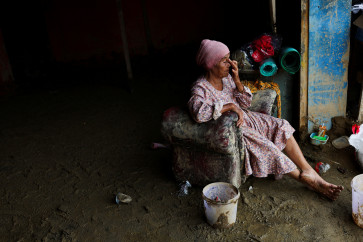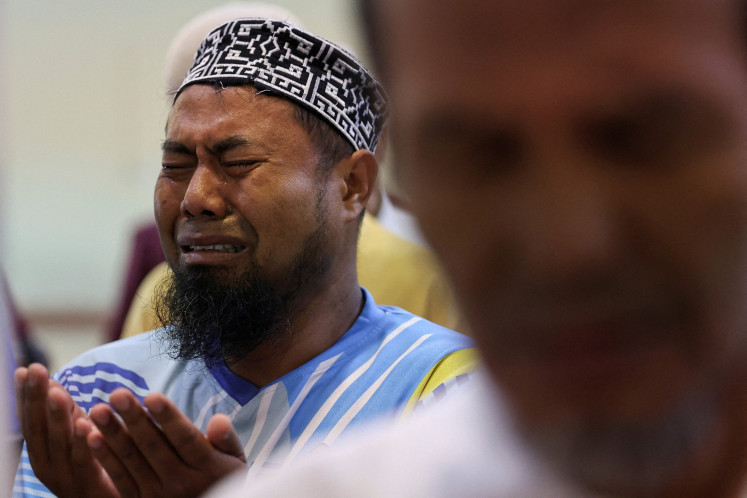Popular Reads
Top Results
Can't find what you're looking for?
View all search resultsPopular Reads
Top Results
Can't find what you're looking for?
View all search resultsRice output to decline, surplus will remain
Farmer power: Farmers plant rice in a paddy field in Tumbihe village, Bone Bolango regency, Gorontalo, on Thursday
Change text size
Gift Premium Articles
to Anyone
F
em>Farmer power: Farmers plant rice in a paddy field in Tumbihe village, Bone Bolango regency, Gorontalo, on Thursday. The Central Statistics Agency (BPS) recorded that the farmer's exchange value (NTP), an indication of farmers' purchasing power, increased to 101.23 in January from 100.62 in December 2014. JP/Syamsul Huda.
Despite the government's massive efforts to boost productivity, rice production is expected to decline this year because of a forecast long dry season.
The country's unhusked rice output would dip by 0.95 percent to 71.28 million tons this year, from 70.6 million tons in 2014, according to the Agriculture Ministry's director general for food crops, Hasil Sembiring.
'We will have a long dry season this year, which will result in lower output, in contrast to a wetter season that contributes to higher output,' he said on the sidelines of a hearing at the House of Representatives.
Hasil said that despite shrinking output, there would still be a surplus of 8.2 million tons of unhusked rice this year. Based on weather forecasts from international climate agencies, the ministry predicted there would be a weak El Nino from Oct. 2014 to Jan. 2015. The early planting season began in October and November, while the second one will begin in mid-February.
The Agriculture Ministry has earmarked at least Rp 30 trillion (US$2.38 billion) to finance programs to help boost rice production, including development and improvements to irrigation infrastructure, distribution of seeds and fertilizers and expansion of planting areas.
The government will attempt to extend the existing productive farmland by around 2.6 million hectares to between 15-16 million hectares.
As of January, harvested rice covered around 680,000 hectares; it is expected to surge to 1.2 million hectares in February. Lower annual rice production may push up food prices, always a key concern in Indonesia, the world's fourth most populous nation with 250 million people, for whom rice is a staple food.
Rice prices have been manageable in the first month of this year, with rice only contributing 0.07 percent to January's 0.24 percent inflation rate.
Rice consumption per capita in the country will reach 124 kilograms this year, according to data from the Agriculture Ministry. When asked about the possibility of imports because of reduced rice output, Hasil said that the government was determined to avoid imports to comply with the mandate given by President Joko 'Jokowi' Widodo.
Agriculture Minister Amran Sulaiman has vowed to raise production of staple foods, including rice, in the next three to four years, to completely stop imports.
'We will have a surplus and we have planned massive programs to help increase local production,' Hasil said.
Indonesia, the world's third-largest rice consumer, was self-sufficient in rice in 2008 and 2009, but started to import the key staple food in 2010 after stockpiles fell and harvests failed to meet targets.
Institute for the Development of Economics and Finance (Indef) economist Bustanul Arifin said that the decline in production was in line with expectations as the planting season was late.
'If we don't want to see output decline this year, rice crop maintenance must be improved, as during the rainy season rice is vulnerable to pests,' Bustanul said, adding that rice drying was a key activity in post-harvest management.










